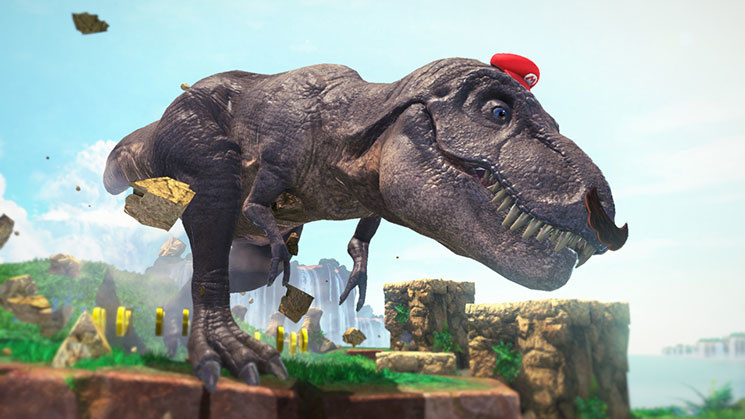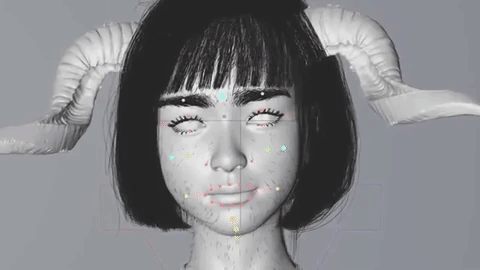Alan Wake 2: Blurring the lines between gaming and revelatory art

- In many art forms, artists initially grappled with the medium before their work was recognized as art.
- In film, for example, technological advancements and creative experimentation gradually unlocked new avenues for storytelling.
- A long-running debate questions whether video games can ever be art. Adam Frank explores how the 2023 game Alan Wake 2 offers a decisive answer to that question in his eyes.
Science is one route to the truth. Across the millennia, drawing on many diverse influences, we humans figured out a way of interrogating the world that reveals features we can all agree on (like, for instance, the acceleration of a falling object due to gravity). But art goes back even further. While art doesn’t have the same “objective” criteria as science (meaning everyone, everywhere agrees), it can reveal aspects of human experience that resonate as potent, revelatory, and true.
But what’s possible with art, just like science, depends on the technologies we have for making it. I was given a master class in exactly this possibility last week when I finished the extraordinary video game Alan Wake 2 from Remedy Studios. The game (or should I call it “the work”) raises profound questions about how art functions, what allows it to be truthful, and how new technologies allow that truth to happen in new ways, which may even allow it to raise new truths.
I realize that, for some folks, the idea of video games as art will seem novel or, worse, stupid. Aren’t games just juvenile exercises in running around virtual environments shooting aliens, robots, or zombies? As an avid gamer, I can tell you that yes, sometimes that’s exactly what they are (and it’s what makes them so much fun!).
But thinking that’s all there is to the new technology of video games would be a huge mistake. After all, lots of movies are about somebody running around shooting aliens, robots, or zombies. Does that mean film can’t rise to the level of art? We would all agree that Ingmar Bergman or Federico Fellini used film to make great art. We can also all (probably) agree that Martin Scorsese, Stanley Kubrick, and Spike Lee also used film and genres like crime, science-fiction, and horror to make films that rise to the level of art.
So, here’s the important point: When the new technology of “moving pictures” first appeared, no one knew how to tell stories with it. It took a while before the craft of editing and blocking shots developed. In other words, it took a while before people figured out how the technology of film could be used for telling stories in a new way so that truths could be revealed. It took a while for films to become an art form.
What happens with Alan Wake 2 is that you can see the same process occurring in yet another new form: the video game. Let’s go a bit deeper to understand exactly how that happens.
The evolution of a new art form
Alan Wake 2 lives in the genre of horror/thriller (mild spoilers ahead!). The game features two stories told (or played) in parallel. The first story is of a writer, Alan Wake, who has been trapped in a parallel reality by a menacing presence that seeks to break into our world. Wake’s only hope for stopping the presence is to write his way out of the dark world in which he’s trapped. As told in the original Alan Wake game, the dark presence uses the creative power of artists and their art to manifest ideas in the real world for its own ends. Though harassed and thwarted by the presence, Wake is trying to craft a novel that will create the opposite of that entity’s intentions and bring Wake back to our world.
The second story occurs in our world as FBI agent Saga Anderson investigates a series of ritual/cult murders in the town of Bright Falls WA (where the events of Alan Wake I occurred 13 years ago). As her investigation deepens, Anderson begins finding manuscript pages from a novel that detail events either happening to her at that moment or about to happen. The FBI agent is, herself, menaced both by members of the murder cult and versions of the dark, supernatural presence that Wake is fighting.
As the game progresses, the player takes on the role of both Wake and Saga in their respective worlds. The gameplay involves combat and problem-solving whose mechanics are so fluid and well-paced that they make Alan Wake 2 a great and massively fun game to play. This is an important point because, as anyone who has sat through a bad, four-hour arthouse film can tell you, sometimes great and deep ideas don’t make for great films.
So, where does the great/deep idea appear in the game? As the player shifts between the beautifully imagined nightmare version of New York City that Wake inhabits and the dense, menacing forests surrounding Bright Falls where Saga Anderson carries out her investigation, a looping narrative pattern emerges. Wake’s attempt to get the story “right” as a novelist spirals back into the real world of Anderson’s investigation. Because Wake can only escape the “dark place” by writing a story that is true to the forms of its genre (just as the game is working within that same genre), Anderson’s world becomes transformed by Wake’s efforts. In this way, the game becomes a work of art that effectively changes the world the player inhabits because it’s a work of art that directly explores the ability of art to affect the world.
And just as the fluid game mechanics make Alan Wake 2 so effective as a game, it’s the other elements of its formalism that make it so effective as a work of art. This plays out in several ways. One is the density of the narrative tapestry that Remedy Studio weaves. There are other games in this “Remedy-verse,” like 2019’s Game of the Year Control). Taken together, there is a filigreed backstory for almost everything in Alan Wake 2. For all the horror/thriller suspension of disbelief required for the genre, the world feels rich and fully inhabited.
Another far more important manifestation of the game’s reaches as art manifests in its broad use of art. Alan Wake 2 creatively uses many forms. There is an extended rock-opera dance segment (I kid you not) that is used to recount the events of the first Alan Wake, and part of the game’s narrative revolves around a lost Norwegian arthouse film. Then, right in the middle of the game, that entire film becomes available to the player in a scene set in — yup — an arthouse cinema. It’s a meta-commentary on meta-commentaries and done so well and lovingly that it never feels forced or twee.
In the end, my reaction to Alan Wake 2 comes from having spent a lot of time in the fictional worlds of a lot of video games. In general, I am not looking for every game I play to push boundaries of how I experience the world, just as I don’t expect every movie I watch to be “art.” But when it does happen, when a game does cross that line and leave me looking at the world differently for weeks on end, then I know I have encountered that rarest of qualities in either science or art: excellence. And that is worth noting and celebrating.





